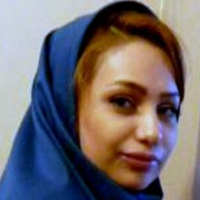The Role of Geomorphology in natural hazards, vulnerability and prevention of natural disasters in Iran
Iran is afflicted by frequent natural disasters including floods, earthquakes, droughts, and sandstorms. Unfortunately, geomorphology and its special place in forecasting, evaluating, and Iran is afflicted by frequent natural disasters including floods, earthquakes, droughts, and sandstorms. Unfortunately, geomorphology and its special place in forecasting, evaluating, and vulnerability in areas prone to natural hazards are still not given much importance, and despite warnings, numerous predictions and assessments people and officials are still surprised when faced with hazardous events. This paper addresses the significance of geomorphologists into the strategies of risk assessment and management. digital elevation maps, time series of 30-year data (1361-1331) of maximum daily discharge of Hojatabad station in Kermanshah as a case study in flood return period, earthquake statistics of Tehran province and its surrounding area in terms of vulnerability caused by an Earthquake in Alborz Province. Regional frequency analysis method and fuzzy model were used to analyze natural hazards and natural disasters. The results about the return period of the flood indicate the consequences of a flood are measured using return periods, giving an idea of the characteristics the flood may have (magnitude) and (frequency). The results of zoning map of vulnerability caused by an earthquake showed that about 28% of the study area in the zonation of high and very high vulnerably. A framework should be provided to analyze human vulnerability in the case of floodind and earthquake which is possible only by employing geomorphologists in the organization of geomorphologists in the form of consulting groups in the field of natural disaster prevention and the creation of natural disasters monitoring center in Iran.
- حق عضویت دریافتی صرف حمایت از نشریات عضو و نگهداری، تکمیل و توسعه مگیران میشود.
- پرداخت حق اشتراک و دانلود مقالات اجازه بازنشر آن در سایر رسانههای چاپی و دیجیتال را به کاربر نمیدهد.


